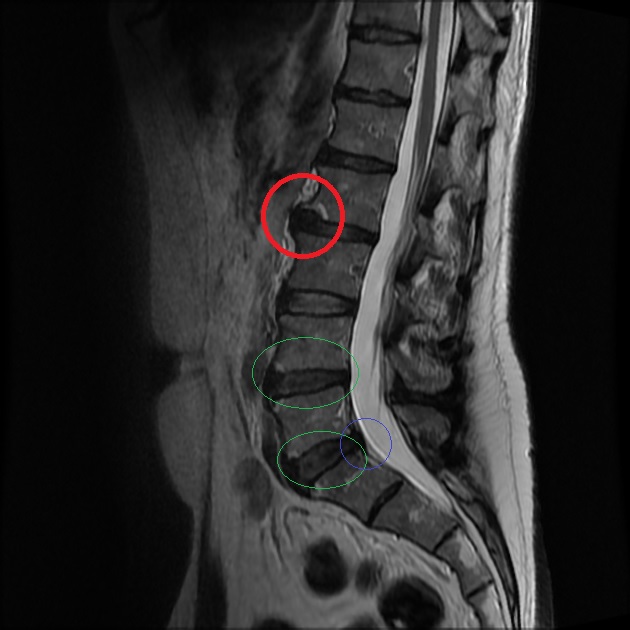Should I have an MRI or X-ray of my back?
I frequently get asked by patients whether an MRI or X-ray is needed. I thought this would be a great topic to cover and I will test your MRI skills too.
What’s the difference MRI or X-ray?
X-rays are a type of radiation called electromagnetic waves. X-ray imaging creates pictures of the inside of your body. The images show the parts of your body in different shades of black and white. X-rays are good for seeing bones, in your back this is best for fractures or seeing arthritis.
MRI scanners use strong magnetic fields, magnetic field gradients, and radio waves to generate images of the organs and structures in the body. For your back MRI’s show soft tissues like ligaments and discs much better but it is more difficult to see bony structures.
Which is better?
X-rays are cheap and readily available. They can give a good oversight of the state of someones spine but lack the detail on soft tissue structures like discs. Generally, our current understanding and guidelines are to reduce the number of X-rays we do for back pain as they often don’t give us enough information to justify their use.
MRI’s are more complex, cost more and are generally harder to get. They are great for visualising discs and spine structures X-rays can’t and are generally the better option in back pain.
There are scenario’s that X-ray is the preferred scan, but the vast majority of patients will get more from an MRI.
BUT
We must be careful that we don’t overuse these MRI scans. When it comes to back pain, we often see a lot of false positive scans and also false negative. We have to remember that when we see a disc bulge on an MRI in a 40-year-old that actually around 40% of 40 year old who have NO back pain will have a disc on an MRI scan. When we see a healthy MRI but a person in severe pain, this doesn’t mean that person is imagining the pain. Often a lot of back pain is caused by things you don’t see on a scan. Movement, abnormal muscle tension etc.
The key to getting the most benefit from a scan is also taking that in context with a patients history and examination findings. If we have a history of a injury with a mechanism suggesting a disc issue, clinical exam findings of a disc and a disc on an MRI that would correlate. If these things don’t match up we must be careful not to jump to conclusions. Getting and reading an MRI is not an exact science but a balance of knowledge, skill and experience.





Leave A Comment